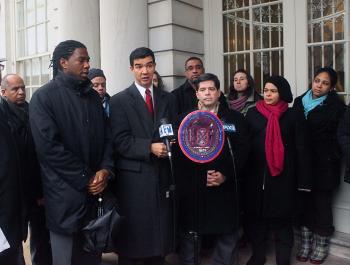Construction overruns are often inevitable for projects, whether they are large or small. In the $1.23 trillion construction industry nationwide, overruns make up about $100 billion.
The recurring problem seems to dominate the industry and many fall prey to the pitfalls. Barry LePatner, author of “Broken Buildings, Busted Budgets: How to Fix America’s Trillion Dollar Construction Industry” cites many of the pressing issues in his book.
“When questioned as to why they felt they had no control over what they spent for their hospital, school, or hotel project, business leaders express anger, frustration, or denial,” writes LePatner in the book. “I came to realize that no one involved in the process has a clear understanding of why our nation’s construction world works the way it does.”
Throughout the book, he attributes the source of the problems in the industry to low productivity, a predominance of fragmented small firms, an uncompetitive market and a lack of fixed-price contracts.
“Contractors have every incentive to bid low on a project to get the job,” he writes. “Because the business is highly competitive at the bid stage, most firms know that their low bid will not return an adequate profit.”
The authors of “The Commercial Real Estate Revolution: Nine Transforming Keys to Lowering Costs, Cutting Waste, and Driving Change in a Broken Industry,” similarly cite inefficiency and bad behavior as the cause of high overruns.
It mentions several myths such as “the competitive bid process ensures we get the right price,” stating that firms compete not to see who can deliver the best building for the best value, but to win the contest.
LePatner writes that after the contractor obtains the contract, he becomes a monopolist. “Once they are embroiled in construction, they have few good options but to pay up in order to keep the project moving ahead,” he writes.
He points to an unequal balance of knowledge between the buyer and seller as a root of the problem. The change in the role of architects, which in the past acted to prevent overruns, has aided in the increase of this ‘bad’ behavior on the part of the contractor.
“The owner is now in a predicament,” he writes. “The sole party with the knowledge of construction costs was the same party who was in charge of construction.”
In the book, Le Patner suggests insisting on true fixed-rate contracts. “By weighing true risk against higher profitability, smaller firms will no longer remain the norm. When contractors can no longer wiggle out of bid terms after all credible threat of competition has ended, construction firms will finally feel the full brunt of market competition,” he writes.
For New Yorkers interested in learning about how to avoid the dangers of construction overruns, New York City based construction law firm LePartner & Associates will offer new seminar entitled “True Fixed-Price Construction Contracts,” free of charge.
The 1.5 credit course program is a part of New York State Unified Court System’s Continuing Legal Education program in collaboration with the bench and the bar. Those interested can register by contacting LePatner & Associates at (212) 935-4400.



